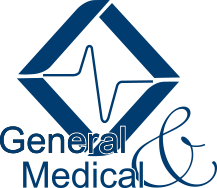Angle-Closure Glaucoma
The most common type of glaucoma is called primary open angle glaucoma. It starts very slowly and has no symptoms to begin with, so it is usually discovered during an eye health check by an optometrist. When glaucoma is detected early and treatment is started and continued, significant sight loss is unlikely.
Your eye pressure is controlled by watery fluid called aqueous humor, or just ‘aqueous’. Aqueous is produced in a ring of tissue that sits behind your iris called the ciliary body. It then flows through the pupil and drains away through tiny channels called the trabecular meshwork. The trabecular meshwork is found in the angle between the cornea and the iris (often called the drainage angle). If this drainage angle is narrow, this can reduce how easily fluid escaping the eye.
Some eyes naturally have a narrower drainage angle for example, people with smaller eyes, people who are long- sighted or people of particular ethnic origin. This smaller angle can get even narrower, or even close completely, causing fluid to build up and eye pressure to rise. This condition is called Primary Angle Closure Glaucoma (PACG) and can happen acutely (rapid) or be chronic (slowly progressive).
Acute Angle Closure Attack
This is when the drainage angle is suddenly completely blocked and a rapid rise in intraocular pressure occurs. This is known as an attack of acute angle closure. Symptoms can include:
- Intense pain in and around the eye (often a dull, boring ache like toothache) that can be sore or tender to the touch
- Redness of the eye
- Blurred or reduced vision
- Headache
- Nausea or vomiting
- Seeing halos around lights
- The pupil is enlarged and does not constrict (get smaller) when the light is shone into the eye
The risk of developing this increases above the age of 40, although it most often occurs at around 50-60 years of age. Women are more likely than men to develop angle closure.
This condition must be treated quickly by an ophthalmologist (eye doctor) as a rapid rise in pressure can cause permanent damage to the vision. It is important that you seek help immediately to help reduce your eye pressure.
The most common treatment at first is:
- Repeated eye drops which help to open the drainage angle, reduce inflammation and reduce intraocular pressure.
- A medication called acetazolamide that quickly reduces the amount of fluid produced
- Emergency laser treatment ‘iridotomy’ is often used to reduce the eye pressure and help prevent a re-occurrence of the condition.
Once the intraocular pressure in your eye has reduced, it will be necessary to perform laser treatment called a peripheral iridotomy. This is usually performed on both eyes, to prevent an attack to the unaffected eye.
Local anaesthetic eye drops are used, and the procedure is carried out in the out-patient department.
The laser beam creates a small hole in the iris that allows the fluid to flow through the eye via a different route.
The iris then lies further back and the drainage system opens up. The small hole is normally positioned at the top of the iris just under the eyelid. If not treated, the pressure remains high and will cause irreversible damage to the optic nerve and permanent loss of vision.
If there is a cataract forming in the eye it is often beneficial to remove this, as the lens becomes thicker, pushing the iris forward and closing off the drainage system. Sometimes a cataract extraction is done instead of the laser iridotomy.
Some medications have the risk of precipitating acute angle closure glaucoma. These include:
- Motion sickness medication
- Antihistamines
- Decongestants
- Asthma medication
- Some anti-Parkinson’s drugs
- Some antidepressants (tricyclicantidepressants)
- Some nebulised drugs for asthma
- Anti-spasmolytics e.g. medication for irritable bowel syndrome etc.
However if you have angle closure and have had a laser iridotomy or cataract operation, then there is very little risk in taking these medications.
You should always read the leaflet which comes with your medication and, if you have angle closure glaucoma, ask the advice of your ophthalmologist about the balance of risks involved in taking these drugs. Do not stop medications without seeking advice, as this can also be harmful.
“Sub-acute” attack
A person may suffer mild sub-acute attacks with symptoms of blurred vision, halos around lights and transient headaches without the full- blown attack. These may be resolved spontaneously after sleep but can recur. Sub-acute attacks often happen at night, and may feel better again after sleep. However, they can return. It is important to seek advice before a full-blown attack and possible damage occurs.
These attacks may be related to the use of certain medicines (such as those listed above) as these can cause pupil dilation. They can also happen in dim light e.g. in the cinema or theatre, during an adrenaline rush or state of excitement. Eye drops used for dilating the pupil during an examination of the eye may trigger an attack, although this is rare.
Sometimes the drainage angle can be blocked for another reason, such as inflammation, haemorrhage (bleeding in the eye) or scar tissue. This is called secondary angle closure glaucoma and may be sudden or gradual.
Chronic Angle Closure
This is caused by contact between the trabecular meshwork and the iris over a long period of time. This usually becomes a problem when more than 50 per cent of these two structures are touching (i.e. for more than 180° around the iris).
The eye pressure may be raised for short periods of time before returning to normal, or it can stay high. There are no symptoms. Between periods of high pressure, the only sign of chronic angle closure is the narrow angle, until nerve damage becomes visible.
Other family members
Close relatives of those with angle closure glaucoma have a higher risk of developing it themselves. Therefore we strongly recommend you contact your close relatives to let them know if you have angle closure glaucoma, so they can get their eyes tested. People over the age of 40 who have a close relative with glaucoma (e.g. parent/sibling) are eligible for a free eye test with their optician.
FAQs
If you experience any of the symptoms from the list above and would like an honest, friendly and professional opinion, contact us using the form provided, via email info@privateophthalmologist.co.uk or call 07949 767906. These symptoms can happen in other conditions and we can guide you to the most appropriate care.
Quality care in a relaxing surrounding
Book an appointment to see Mr Nish Srikantha at the Candover clinic in Basingstoke, or the Healthshare Clinic in Winchester.
Both locations are modern purpose built private hospitals designed entirely for patient well-being and comfort. The Candover Clinic is a stand-alone unit located on the Basingstoke and North Hampshire Hospital. The Healthshare Clinic on the outskirts of Winchester boasts a purpose built ophthalmic outpatients department and operating theatre offering the latest diagnostic and treatment technologies.













